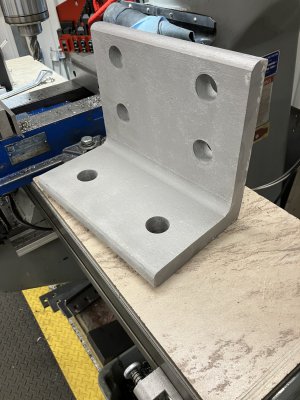Neat, but I’m not impressed by the simple fact that you’re suggesting welding on a galvanized part.
That is the last thing I would suggest someone to do unless I knew they understood the risks, and I didn’t see that covered.
Flycutting would have him inhaling enough galvanized dust to likely make him feel bad and welding on this would defiantly give him fume fever.

en.m.wikipedia.org
So given that, I think OP would be better served to foregoing this venture and buy a proper angle plate, or use this one as is, verses contaminating his shop and or tools with galvanized dust or fumes.

